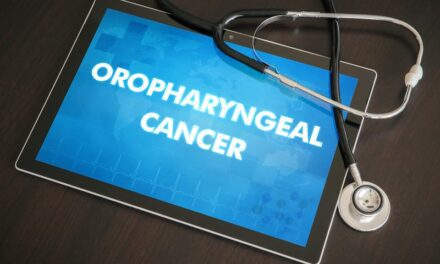Advances in testing techniques predicted as moonshot byproducts
By Gary Tufel
During his 2016 State of the Union address last January, President Obama announced his appointment of Vice President Biden to lead a new “National Cancer Moonshot” initiative to eliminate cancer as we know it. On February 1, the White House announced that it would provide $1 billion in funding to jumpstart this work.
The announcement noted that many American families know all too well the devastation cancer can bring. “More than 1.6 million new cases of cancer will be diagnosed, and cancer will kill an estimated 600,000 Americans in 2016. Cancer doesn’t discriminate—it strikes young and old, family and friends, neighbors, and coworkers. As the President said, we must harness the spirit of American innovation to identify new ways to prevent, diagnose, and treat cancer.”1
Biden is heading the National Cancer Moonshot Task Force, whose aim, he said, is to “marshal the incredible resources of the federal government, but also to bring together the physicians, researchers, institutions, and philanthropists who are doing great work on research and treatment. We’re doing two things: increasing resources, both private and public, and breaking down silos to bring all the cancer fighters together to share information.
“Research and therapies are on the cusp of incredible breakthroughs. The goal of this ‘moonshot’ effort is to seize the moment—in short, double the rate of progress in the understanding and treatment of cancer, make a decade worth of advances in 5 years,” Biden said.
In March, Biden appointed Greg Simon as executive director of the task force. In 2003, Simon cofounded the group Faster Cures, which pushes for collaboration and speeding up research around serious diseases. Simon also has experience in the pharmaceutical industry, having served as a senior vice president of Pfizer from 2009 to 2012.
Also in January, billionaire entrepreneur Patrick Soon-Shiong, MBBCh, launched another cancer initiative, Cancer Moonshot 2020. The project’s stated goal is to focus aggressively on rapidly developing new treatments for the disease. It is being managed by a consortium of companies called the National Immunotherapy Coalition (NIC).
Soon-Shiong pulled together a coalition of drugmakers to speed development of what researchers believe could be a powerful weapon against cancers—potent combinations of new drugs that harness the body’s immune system. (For more information, see, “Screening Tests that Reduce Cancer Deaths.”)
So-called immunotherapies help disease-fighting cells attack tumors. Yet researchers believe they may work best when two, three, or more of the drugs are used together—overwhelming a tumor’s cellular defenses with attacks from all sides.
The Soon-Shiong Moonshot 2020 initiative also includes academic institutions and insurers. Its leaders hope to get competing drug and biotech companies to work together on the combination treatments rather than developing their own compounds in isolation.
“The key contribution here is the ability to run combination studies with drugs from multiple pharma companies in a rapid manner,” says Manuel Hidalgo, MD, PhD, clinical director of the cancer center at Beth Israel Deaconess Medical Center in Boston. “Combination studies with unapproved drugs from different pharma companies are not easy to do, and we want to be able combine three to four drugs, not just two.”2
Both plans rely upon the development of more effective, personalized cancer treatments, according to Georg Lautscham, PhD, chief business officer of Protagen in Dortmund, Germany. “However, Soon-Shiong’s moonshot project is more restricted than the President’s moonshot project, as it focuses on immunotherapy and small clinical trials. The focus is more about boosting the immune system to fight cancer in combination with lower doses of chemotherapy and/or radiation. The President’s moonshot project similarly focuses on tailored treatments with a big role for immunotherapy.
“No doubt, the $1 billion that the President has pledged to the US National Institutes of Health (NIH) is significant and will certainly support the advancement of cancer diagnostics and therapeutic development,” adds Lautscham. “However, it is a huge task that requires a multifaceted approach and undoubtedly additional efforts are required. There is hope that the research generated from both projects will be shared and unified in the drive to 2020,” he says.
Another cancer initiative, the $3 billion Moon Shots effort at the University of Texas MD Anderson Cancer Center, predates the Biden and Soon-Shiong projects. Leaders of the project, which currently covers more than a dozen cancers, have met with Biden to share information learned since its launch in September 2012.
Furthermore, Biden is eyeing private money to help support his cancer moonshot initiative in addition to the Obama administration’s request for some $755 million in funding for the project, because Congressional Republicans have said they won’t simply hand the funds over. Further, Biden’s tenure is winding down. To supplement that funding, Biden is drawing inspiration from the new immunotherapy institute at Johns Hopkins University.
The $125 million Bloomberg–Kimmel Institute for Cancer Immunotherapy is supported by two $50 million philanthropic donations, one from Michael R. Bloomberg, the former mayor of New York, and another from Sidney Kimmel, the founder of Jones Apparel Group, as well as through a total of $25 million in donations from a dozen others.
The center will be led by Drew Pardoll and is to focus on breast, colon, lung, melanoma, ovarian, pancreatic, and urologic cancers, according to the university.
“I don’t want to leave the impression the federal government is the only answer. It’s not,” Biden said in a speech after the institute’s announcement. “This is a great example of one of the core elements of the cancer moonshot task force: facilitating cooperation between government, the private sector, academia, and philanthropy.”3
ADDRESSING POLICY OBSTACLES
The clinical laboratory community expects that it will have a vital role to play in the various moonshot initiatives, and is working to ensure such a role. But comments from stakeholders suggest that moonshot-driven advances in cancer diagnostics could be left on the launchpad unless other policy issues affecting clinical laboratory testing are also addressed. (For more information, see “Blue Ribbon Panel Announced to Help Guide Vice President Biden’s National Cancer Moonshot Initiative.”)
In a February 10, 2016, letter to Biden, the American Clinical Laboratory Association (ACLA) emphasized the expanded role of diagnostic innovation in the research and treatment of cancer and urged the vice president to reject regulatory and payment and coverage proposals that could hinder advances in the development of and patient access to diagnostic tests.4,5
ACLA’s remarks resurfaced the ongoing controversy over FDA’s proposed regulation of laboratory-developed tests (LDTs), which received a thorough airing at a 2-day FDA workshop, “Framework for Regulatory Oversight of Laboratory-Developed Tests,” in January 2015. FDA is currently in the process of preparing a final set of rules on LDTs, taking into account public feedback provided during the notice and comment period.6,7
“The impact of federal policy regarding coverage for and payment of clinical laboratory tests has significant repercussions in the present and in the future for the prevention, diagnosis, treatment, and the ultimate cure for cancer,” wrote Alan Mertz, ACLA president. “If the task force wants to meet its stated goals, then improvements must be made swiftly to both coverage and reimbursement rates for clinical laboratory test services.”
Specifically, ACLA cited FDA’s proposed guidance on the regulation of LDTs—many of which are used to identify and guide the appropriate treatment of various cancers, including breast, colon, leukemia, and lymphoma—as a hindrance to ongoing scientific advances in diagnostics.8,9
“ACLA applauds the administration’s leadership in proposing a greater emphasis on finding the cure for cancer,” Mertz added. “If accelerating research efforts to find the cure for cancer is the main objective of the moonshot, then the administration must respectively reject FDA guidance to regulate LDTs and support logical payment reforms for diagnostic tests that are saving patient lives and fueling the personalized medicine movement.”
ACLA wasn’t the only organization angling for a share of the of the moonshot initiative. In a March 31, 2016, letter to Biden about the National Cancer Moonshot Task Force, industry association AdvaMed offered “an overview of the important role that medical technology, including diagnostic tests, medical imaging technology, and radiotherapy technology, plays in cancer care and treatment.”10
“A wide range of medical diagnostic tests are used in every stage of cancer care, from disease research and drug development, screening, diagnosis, staging, and prognosis, to therapy selection, therapy and disease monitoring, and follow up testing,” wrote JC Scott, AdvaMed senior executive vice president and director of government affairs. “Molecular diagnostics that can identify cancer biomarkers, including genetic mutations and proteins, are the foundation of precision medicine and are driving advances in clinical cancer research and treatment options that are revolutionizing cancer care.”
AdvaMed requested a meeting with Biden’s staff “to highlight medical technologies’ numerous contributions to the current system of cancer care and to discuss new and promising methods for improving existing treatment protocols and developing innovative new pathways for cancer treatment and cure that are less invasive, more precise, and with equal or better outcomes.”
FOSTERING COLLABORATION
What are the primary implications expected of the National Cancer Moonshot project for clinical labs and diagnostics vendors?
“I hope what it means is the National Cancer Moonshot announced by President Obama will foster greater collaboration between all stakeholders involved in managing patients and patient data such that it becomes easier to make clinical decisions based on molecular and genomic testing,” says John Leite, PhD, vice president of oncology marketing for Illumina, San Diego. “Also, I hope this means improved patient access to cutting-edge interventions, testing, and clinical trials.”
Protagen’s Lautscham expects to see an increase in efforts to accelerate the understanding of individual differences that play a role in health, with the goal of informing better prevention and treatment strategies for each patient. In particular, this has positive implications for the earlier diagnosis of cancer, thus leading to more tests to be conducted for closer surveillance, he says.
At the National Cancer Institute (NCI), a spokesperson agreed that it’s still likely too early to assess what the implications for the clinical lab industry and the role of diagnostic tests will be in the National Cancer Moonshot initiative. The White House’s task force, convened at the beginning of February, identified several areas of scientific opportunity, including:
- Prevention and cancer vaccine development
- Early cancer detection
- Cancer immunotherapy and combination therapy
- Genomic analysis of tumor and surrounding cells
- Enhanced data sharing
- Pediatric cancer.
At the beginning of April, NCI announced the formation of a blue ribbon panel of scientific experts, cancer leaders, and patient advocates that will inform the scientific direction and goals of the National Cancer Moonshot. “We expect the panel will focus on the areas listed above,” the NCI spokesperson said. (For more information, see “NCI Opens Online Submission Platform for Cancer Moonshot Research Ideas.”)
MOONSHOT WILL SPUR ADVANCES IN TESTING
Will the National Cancer Moonshot project lead to advances in testing techniques and, if so, in which particular areas of oncology? What changes are foreseen in clinical lab testing as a result of the project?
“I think it must,” says Leite. “Diagnostic testing plays a critical role in understanding the drivers of the malignancy, the likelihood of a good clinical outcome, the risks to reaching that outcome, and how to tailor a management plan.
“I anticipate that the National Cancer Moonshot will impact two key areas in oncology: treatment combinations for advanced disease that will result in the best outcome, and risk factors that allow us to best predict who will develop cancer. In both instances, developing the clinical evidence needed will require clinical trials too large and complex for any one institution, but a coordinated, collaborative effort may mitigate the challenges and accelerate timelines to completion,” says Leite. “Ultimately, I hope to see a wealth of clinical evidence associated with biomarkers that can reveal how to best manage patients both before a cancer diagnosis as well as during their episode of care.”
“Most certainly, additional funding will help to more rapidly facilitate a multiplex-multimodality approach to cancer testing, which will lead to improved patient stratification and more precise treatment,” agrees Lautscham. “Clinical lab testing will have to adapt in parallel to these efforts as the evolving multiplex-multimodality test will be demanding and will result in novel lab routines.
“We are particularly interested in response prediction in immunooncology, where the advances are fantastic,” Lautscham adds. “However, novel treatments only work for a subgroup of patients. Being able to define this subgroup prior to therapy, which is what we’re working towards, will ensure that nonresponders can go straight onto an alternative, targeted treatment without having to go through a more trial-and-error approach.”
Leite anticipates that there will be a focus on whole-genome sequencing. To start, “whole-genome sequencing of tumor tissue at very high depths-of-coverage may reveal rare sequence variants that drive tumor metastasis and therapy resistance. Also, whole-genome sequencing of normal tissue may reveal much about the risk factors associated with developing cancer, or how a patient may respond to therapy once they are diagnosed.
“I also anticipate a focus on blood as a source of biomarker discovery and evaluation for screening, diagnosis, therapy assignment, and disease monitoring,” Leite says. “Measuring RNA expression of various genetic aberrations will also likely become a focus area, especially considering new advances in immunotherapy.
“I’m excited to see all the developments in data warehousing, sharing, and reporting that are likely to be a big part of the National Cancer Moonshot,” Leite adds. “My hope is that patients will have greater access to their genetic and molecular health records, that clinicians can more easily exchange these data in consultation, that researchers can have greater access to develop new insights, and payers can extract more value.”
“We can obviously only applaud an effort that is trying to eradicate cancer,” notes Lautscham. “The lofty initiative aims to accelerate tailored treatments for cancer by expanding cancer trials, exploring fundamental aspects of cancer biology, and establishing a national cancer knowledge network that will generate and share knowledge to fuel scientific discovery and treatment decisions on an international stage.”
Gary Tufel is a contributing writer for CLP. For further information, contact CLP chief editor Steve Halasey via [email protected].
REFERENCES
- Investing in the National Cancer Moonshot [fact sheet, online]. Washington, DC: The White House, 2016. Available at: www.whitehouse.gov/the-press-office/2016/02/01/fact-sheet-investing-national-cancer-moonshot.
- Chen C. A billionaire’s cancer moonshot [online]. Bloomberg. January 11, 2016. Available at: www.bloomberg.com/news/articles/2016-01-11/billionaire-pulls-together-drugmakers-for-cancer-collaboration. Accessed May 6, 2016.
- As Johns Hopkins launches new cancer center, Biden sees a model for his ‘moonshot.’ Stat. March 29, 2016. Available at: www.statnews.com/2016/03/29/biden-hopkins-cancer-moonshot. Accessed May 6, 2016.
- Letter sent to Vice President Biden on the cancer moonshot task force [online]. Washington, DC: American Clinical Laboratory Association 2016. Available at: www.acla.com/letter-sent-to-vice-president-biden-on-the-cancer-moonshot-task-force. Accessed May 6, 2016.
- ACLA underscores value of diagnostic innovation in the administration’s FY 2017 budget billion dollar funding of moonshot initiative [press release]. Washington, DC: American Clinical Laboratory Association, 2016. Available at: www.acla.com/acla-underscores-value-of-diagnostic-innovation-in-the-administrations-fy-2017-budget-billion-dollar-funding-of-moonshot-initiative/#sthash.qsvsutN4.dpuf. Accessed May 6, 2016.
- Public workshop: framework for regulatory oversight of laboratory-developed tests (LDTs). Bethesda, Md: FDA, January 8–9, 2015. Transcripts available at: www.fda.gov/downloads/medicaldevices/newsevents/workshopsconferences/ucm431392.pdf [Day 1]; and www.fda.gov/downloads/medicaldevices/newsevents/workshopsconferences/ucm431422.pdf [Day 2]. Accessed February 17, 2015.
- Hoffmeister DM, Norviel V, Andres CJ. FDA regulation in clinical labs. Clinical Lab Products. 2015;45(3)12–15. Available at: www.clpmag.com/2015/03/fda-regulation-clinical-labs-2. Accessed April 20, 2016.
- Draft Guidance for Industry, Food and Drug Administration Staff, and Clinical Laboratories: Framework for Regulatory Oversight of Laboratory Developed Tests (LDTs)[Framework Guidance]. Silver Spring, Md: Office of In Vitro Diagnostics and Radiological Health, Center for Devices and Radiological Health, FDA, 2014. Available at: www.fda.gov/downloads/medicaldevices/deviceregulationandguidance/guidancedocuments/ucm416685.pdf. Accessed February 19, 2015.
- Draft Guidance for Industry, Food and Drug Administration Staff, and Clinical Laboratories: FDA Notification and Medical Device Reporting for Laboratory Developed Tests (LDTs) [Notification Guidance]. Silver Spring, Md: Office of In Vitro Diagnostics and Radiological Health, Center for Devices and Radiological Health, FDA, 2014. Available at: www.fda.gov/downloads/MedicalDevices/DeviceRegulationandGuidance/GuidanceDocuments/UCM416684.pdf. Accessed February 17, 2015.
- Letter to Vice President Joe Biden on the National Cancer Moonshot and the role of technology in cancer care. Washington, DC: AdvaMed, 2016. Available at: www.pharmamedtechbi.com/~/media/supporting%20documents/the%20gray%20sheet/42/14/advamed%20final%20cancer%20moonshot%20letter%2033116.pdf. Accessed May 6, 2016.









